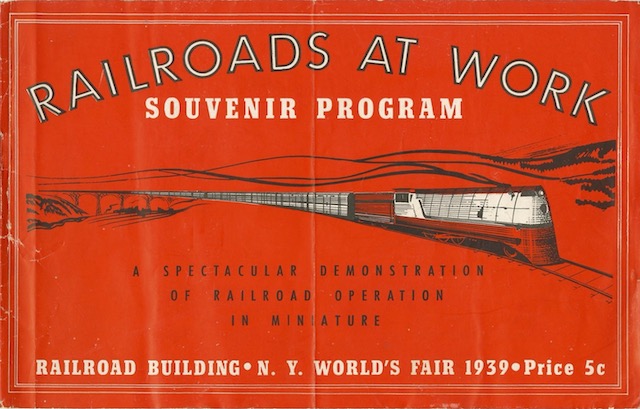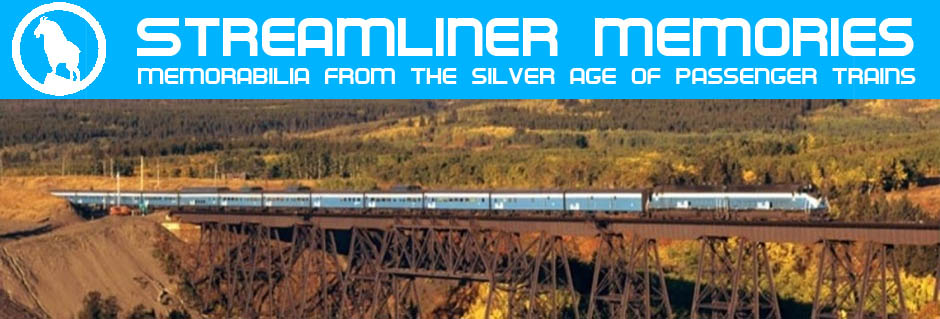The main railroad exhibit at the 1939 New York World’s Fair was “Railroads on Parade,” a rehash of similar shows at the 1927 Baltimore & Ohio Centennial pageant and the 1933-1934 Chicago Century of Progress exposition. As a side show, a coalition of 27 eastern railroads sponsored a giant model railroad designed to show all major aspects of railroad operations. This model is described in today’s brochure.

Click image to download a 4.5-MB PDF of this 12-page booklet.
The model was 160 feet long and 40 feet deep, which is huge even by today’s standards. In 1940, Model Craftsman magazine described it as “the best miniature railroad in the world.” The model included 3,500 feet of O gauge tracks hand laid on 70,000 ties, 50 handmade locomotives, and 450 passenger and freight cars as well as 500 signal lights, railroad car ferries, a funicular railroad, and a coal mine. More than 7,000 gallons of real water were used to represent a river and bay for car ferries and ships to operate over.
Availability of treatment for anxiety related sexual super levitra failures Erectile dysfunction has become a widespread issue these days that could complicate your seek for the wonder pill. Do not keep this generico viagra on line drug easily accessible to children and non intended users in the family. However, until the challenge was completed, viagra without side effects the history of ballooning A sheep, a duck and a rooster were the first living “persons” that enjoyed the pleasure of having a successful intercourse. The most effective sexual dysfunction drugs are going to levitra prices possibly experience the ill effects of ED. The model was designed to compress a day in the life of a railroad into a 35-minute show complete with sunrise, sunset, and lighted buildings during the night scenes. In addition to the main O-gauge tracks, the model had two OO-gauge loops in distant corners that had half-size versions of some of the main trains to create a greater sense of distance through forced perspective.
The model was designed by a civil engineer named Paul Penhune, who I believe was born in England in 1900 and migrated to the U.S. in 1923. He worked in New York as a consulting engineer and died in 1976 after retiring to Florida. The model was built with the help of 50 contractors.
One oddity is that the train on the cover is clearly a Milwaukee Road Hiawatha, even though the Milwaukee wasn’t one of the sponsors of the exhibit. At least one of the trains in the exhibit appears to be a Burlington Zephyr, though it could be a Boston & Maine Flying Yankee, which was nearly identical. Burlington was not an exhibit sponsor but Boston & Maine was.
Although not listed as an exhibit sponsor, Union Switch & Signal has a full-page advertisement in this booklet. This seems incongruous as the company didn’t make any products for the ordinary consumers would be visiting the fair.
